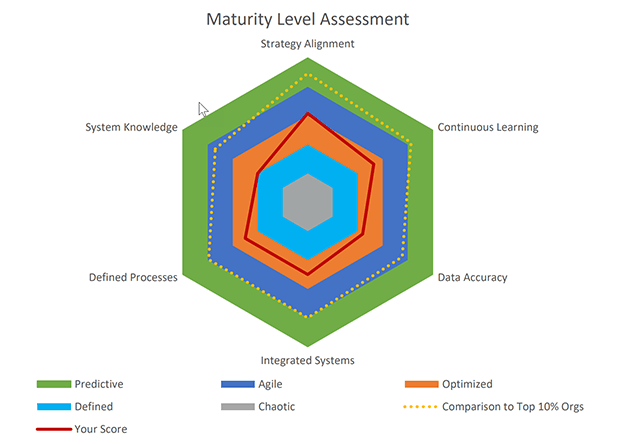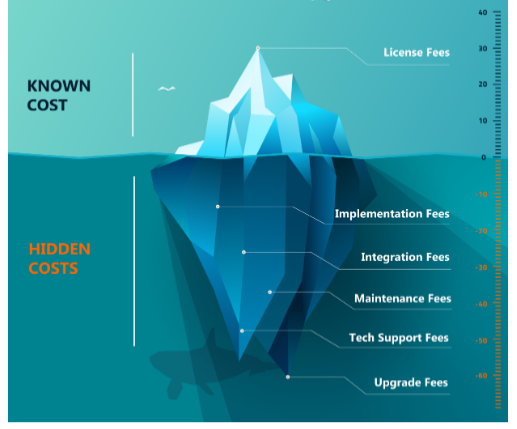How to Create a Dynamic Web Experience for Your Members
How engaging is your association’s member web experience? Entice your members by offering dynamic and engaging content.
Selecting new association software can be difficult; these proven tips will help you find the right system while saving time, money, and stress.
It’s happened to most of us. You launched a search for new association software, and it turned into a long, tedious, and frustrating process. In the end, you may have found yourself with a new solution that was eerily similar to what you just replaced…and no one on your team was totally happy with the choice.
But it really doesn’t have to be that way. We’ve gathered some best practices that can help make the buying process faster, easier, and more accurate — so you can find the perfect system for your association. The following methods will start you on your way:
Previously in this blog, we’ve talked about the need to put together an “Innovation Team” to examine your digital transformation strategy. A new member management system is a means of achieving your strategic goals, so the Innovation Team should definitely be involved in the process.
When assembling your “Software Selection Committee”, you will want to include a representative from each department. It should be a diverse mix of experience levels (executives to middle managers to entry-level staff) and functional areas. It’s important that everyone’s perspective is heard and respected.

We’ve worked with thousands of association clients around the world and over time we’ve identified four best practices used by the most successful organizations:
1. The business strategy drives technology decision making
2. Data is accurate, up-to-to date, and easily accessible
3. The organization is constantly learning from member and staff interactions
4. The website is the business system and vice versa
You’ll want to keep these four elements top of mind as you begin your software selection journey. Your business strategy and digital transformation plan should drive the technology decisions you make — not the other way around. If you keep your organizational goals at the forefront, the process will become clearer and easier.
Once you have your team together, it’s important to set a baseline for your organization — so you know where you’re starting from and can measure your success along the way. Potential vendors can and should be able to help you with this. Here’s an example of what ASI provides — look for something similar from your vendor partners:

ASI offers a complimentary digital maturity self-assessment, which identifies gaps and reveals opportunities to support your top organizational goals and get more value from your association software. You’ll see where your organization places on the maturity chart — whether it’s “Chaotic”, “Predictive”, or somewhere in between. We then come back to you with a detailed review and analysis report that will help you gain insights into how your digital maturity stacks up to other associations and provide specific best-practice recommendations you can implement to move up to the next level.

Learn more about ASI’s digital maturity assessment.
According to Harvard Law School’s Program on Negotiation, “Consensus building is a process involving a good-faith effort to meet the interests of all stakeholders and seek a unanimous agreement.” They identify 5 critical steps for consensus building in group negotiations:
1. Include the right people and set expectations
2. Assign roles and responsibilities
3. Engage in group problem solving
4. Reach agreement
5. Hold people to their commitments

Before you can start your selection process in earnest, you need to build consensus around two major areas:
Focus on the high-level capabilities you need. You want to have a clear vision of what the system will do for you and what it will help you accomplish. Don’t worry about the technical features/functions or bells and whistles at this stage. Think “big picture.”
You likely have many technical challenges to address — like data silos, too much customization, and reporting/measurement issues that complicate decision making. But you also need to identify the organizational challenges, such as:
• Too much focus on the tactical needs of the system instead of a strategic direction
• Lack of consensus among leadership about what the system needs to do
• No clear project scope and divided attention among decision makers
• Unrealistic timelines and expectations
Once your selection team agrees on your goals and challenges, you can move on to the next stage.
The most critical component of any association’s digital transformation strategy is an effective member management system that can support your plans. So, it’s essential to have your Innovation Team involved in the selection process to help shape and guide discussions.
If you haven’t already put together a transformation strategy, now’s the time. Digital transformation is the integration of digital technology into every area of your association, and it’s designed to improve and streamline how you operate. It’s not just a strategic plan — it delves into your corporate culture and shakes things up a bit by encouraging you to experiment and challenge your status quo.
Most successful plans address business processes, how value is delivered to members, the technologies used, and the corporate culture. For a deep dive on how to develop your plan, see our recent blog post: 3 Steps for Creating a Winning Digital Strategy. You can also download a complimentary copy of our Digital Transformation whitepaper.

The COVID-19 pandemic has made it clear that a Cloud-based system is now required to ensure anytime, anywhere access to vital systems for both staff and members. Many associations are now searching for the exact right system for them. When it comes down to it, you have two primary options:

These systems are designed to manage member data, mobile, social, financials, events, and your websites in one solution. An Engagement Management System is a Cloud-based platform with no costly integration or expensive programming headaches because it's purpose-built for associations. By avoiding customizations, an EMS costs a lot less to own and operate year over year.
Many of the large CRM platforms were originally developed for corporate sales forces. They’re popular, have a lot of brand recognition, and offer thousands of third-party app integrations. Licensing fees can be low, but these CRM-based solutions typically require extensive customization to meet even basic association needs — so long-term costs can be very high.
Let’s do a quick audience participation exercise: Raise your hand if you’ve ever used an RFP to try to find/evaluate a new system. Now, keep your hand raised if this was a great experience that resulted in picking the perfect system that met all your needs. Thought so! More and more association executives are sharing in industry forums that the RFP process is outdated and a poor predictor of success.
Of course, every organization is different and has specific needs that must be documented. But you may not be as unique as you think — chances are there are other membership organizations in the world with similar issues/needs. It really boils down to 5 key points I think we can all agree on.
Effective association software must be:
1. Capable of managing ALL your data: You want a single system that will consolidate all your data in one place so you can make real-time decisions. This includes data from members, events, certifications, your websites, product purchases, accounting, etc., etc.
2. Simple to use: It needs to empower your staff so they can find the information they need or perform their jobs without having to rely on IT.
3. Integrated with your website so you can provide personalized web experiences for your members.
4. Cloud-based so it can be accessed from anywhere at any time
5. Purpose-Built for Associations: You have specific needs that are unlike a commercial enterprise and the system must have these right out of the box. You don’t have time to teach a vendor “Association Management 101” — it needs to be baked in.
So, if not an RFP, how do you objectively evaluate a system?
Potential vendors should offer a way of test-driving the system to help you get organized, save you time/money, and lower your risk of investing in the wrong technology. How else will you know for sure that a solution will work for you before you buy? There are many ways to accomplish this but, as an example, here are the three approaches ASI offers:
• Initial Proof of Concept: We take several of your key processes and model them in our system, then show you a demo of how we could meet your specific needs.
• Advanced Proof of Concept: This includes a thorough review of your requirements and the development of a comprehensive backlog of your user stories. It also includes a solutions proposal where we identify any complexities you may have and provide our recommended solution with a detailed cost estimate. Because we’ve completed a very thorough review of your needs, we’ve identified obstacles or roadblocks to a successful implementation (i.e., functional gaps, budget constraints, etc.) before you contractually commit to the purchase. This engagement is ideal if your association has been burned in the past and is risk-adverse.
• Proof of Capability: This is a hands-on test drive. We provide full access to our system’s sandbox. This is geared specifically towards IT staff who want to play with the tools and technologies themselves (with coaching, mentoring, and training) and confirm with their own eyes that the system can do specific things that are scoped out in advance. Here, you can configure and test processes before committing to a system purchase.
The entire cost of one of these engagements can be less than what you might pay a contractor to develop an RFP — and it’s a far better predictor of system success. If you’d like to learn more, check out ASI’s Success Partnership Program.

Of course, system cost is an important factor in your decision, but remember that a vendor’s licensing fees are just the beginning. It’s important to estimate your total cost of ownership (TCO) when evaluating a new system. Be sure to ask:
• How will maintenance and support fees increase over the years?
• Will we need additional staff to manage the system?
• What’s the upgrade path — will it be automatic or require expensive customization?
• How flexible is the platform in connecting with association-specific apps?

Most vendors can find a few clients to say good things about them, but it’s important to dig deeper for:
• Relevant References: Vendors should provide multiple references for associations that are like yours in terms of revenue, complexity, staff size, or number of members.
• Meaningful Testimonials: Look for video interviews so you can hear directly from the customer rather than just reading a few stories their marketing people have written.
• Positive Ratings on Independent Review Sites: You can weed out some companies with poor customer service or those lacking long-term viability before you waste too much time evaluating their systems.
Here are a few independent reviewers you should get to know:
There’s much more that goes into making an informed decision about a vendor, but you’ll want to ask:
• What kind of long-term track record do you have in the association market?
• How many on-time, on-budget implementations have you delivered?
• How much will the training cost initially and in the future?
You don’t have time to teach a vendor about the complexities of the association community; they must come to the table with extensive, relevant experience.
Choosing new association software doesn’t have to be painful if you remember to:
1. Prepare for the selection process
2. Determine your digital maturity level
3. Build consensus among your team
4. Consider how the new system will support your digital transformation vision
5. Study the market to better understand your options
6. Rethink an RFP and test drive instead if possible
7. Really listen to what other customers say about potential vendors to reduce your risk
How engaging is your association’s member web experience? Entice your members by offering dynamic and engaging content.
Start with a core platform that can help your association deliver exceptional member value, then build out your tech stack by focusing on 5 key areas.
The new year is a time to reflect and to finalize plans for your association’s future. Read our top 5 tips for 2022 to start your year off right.